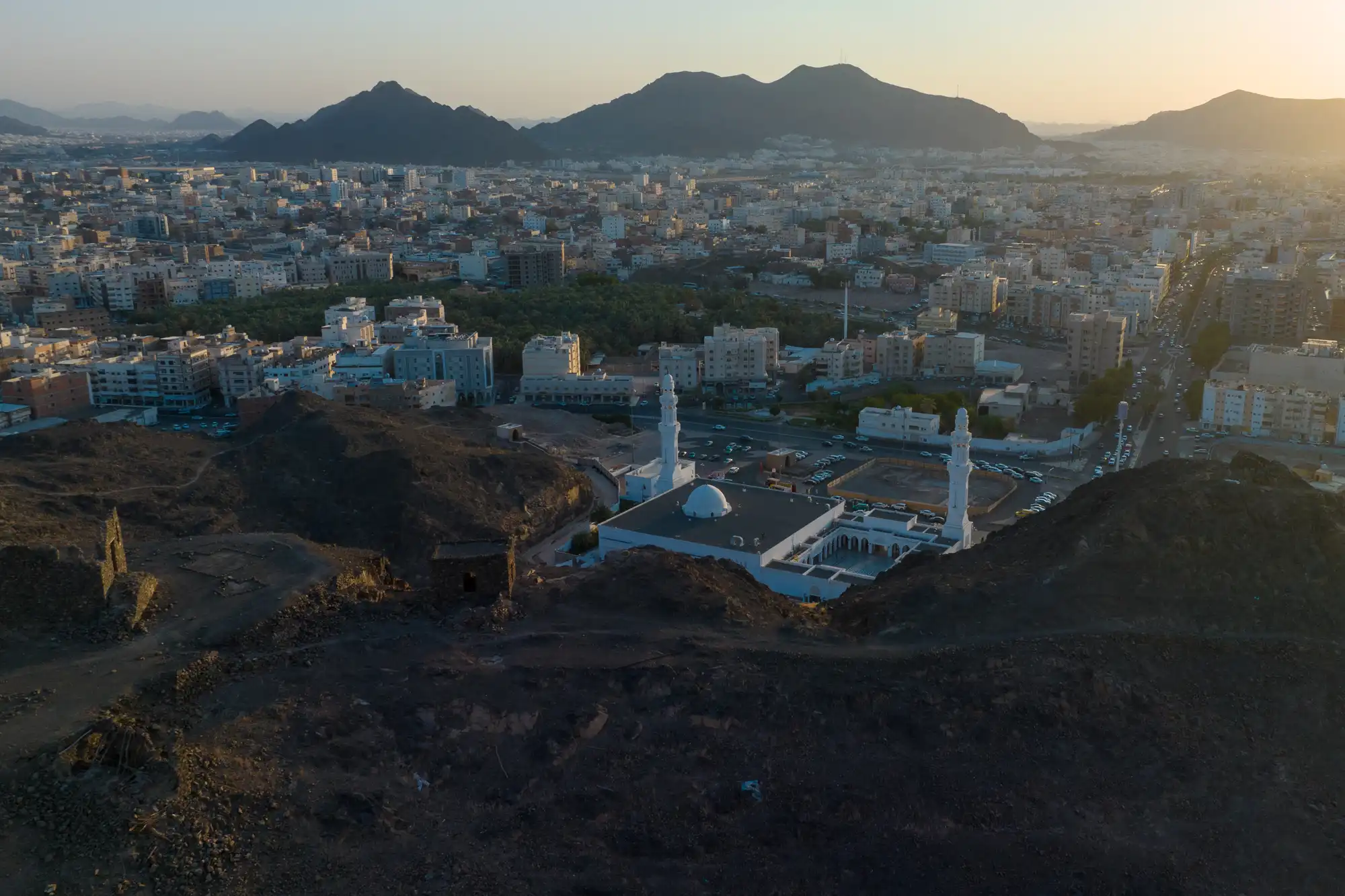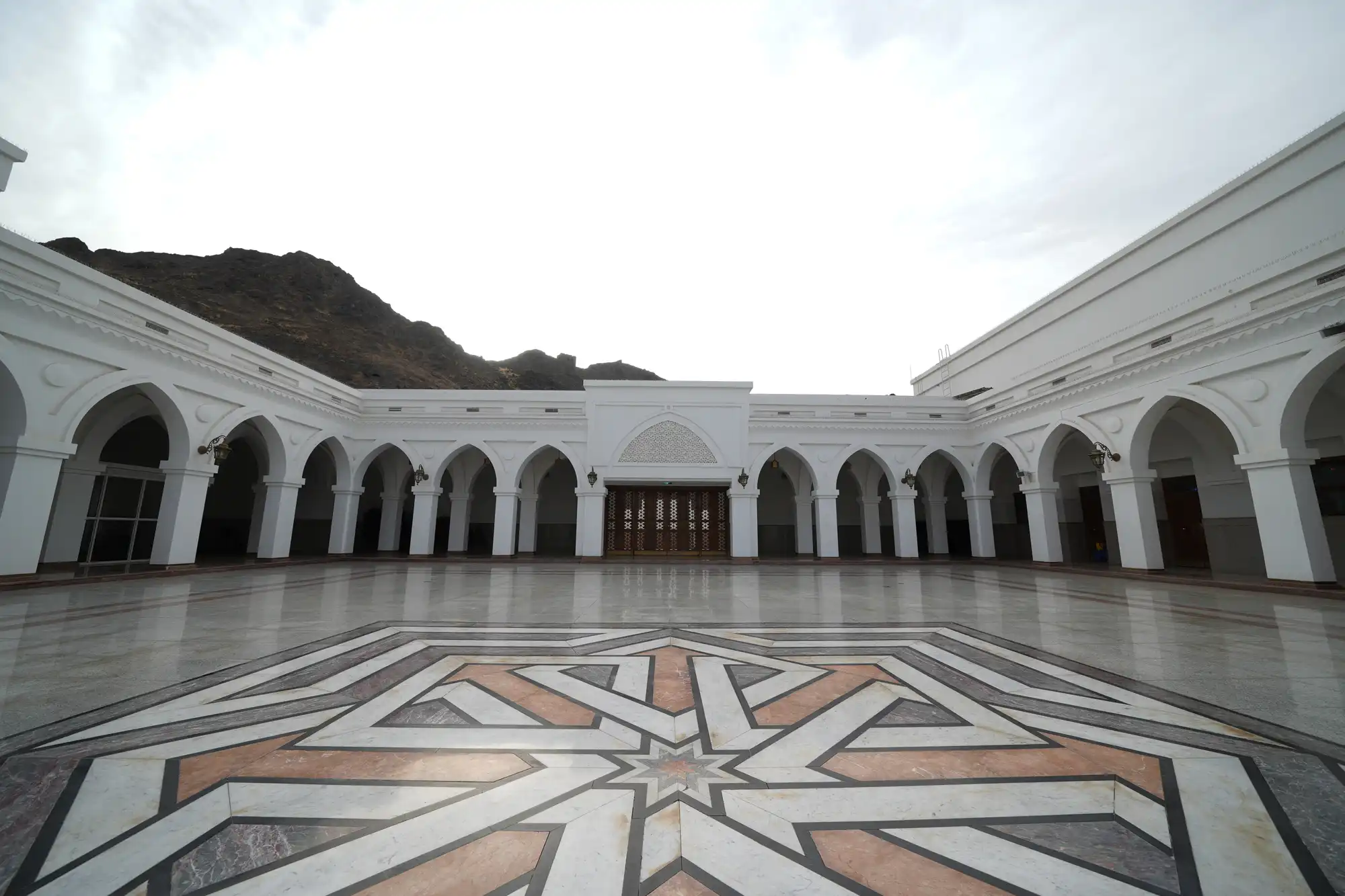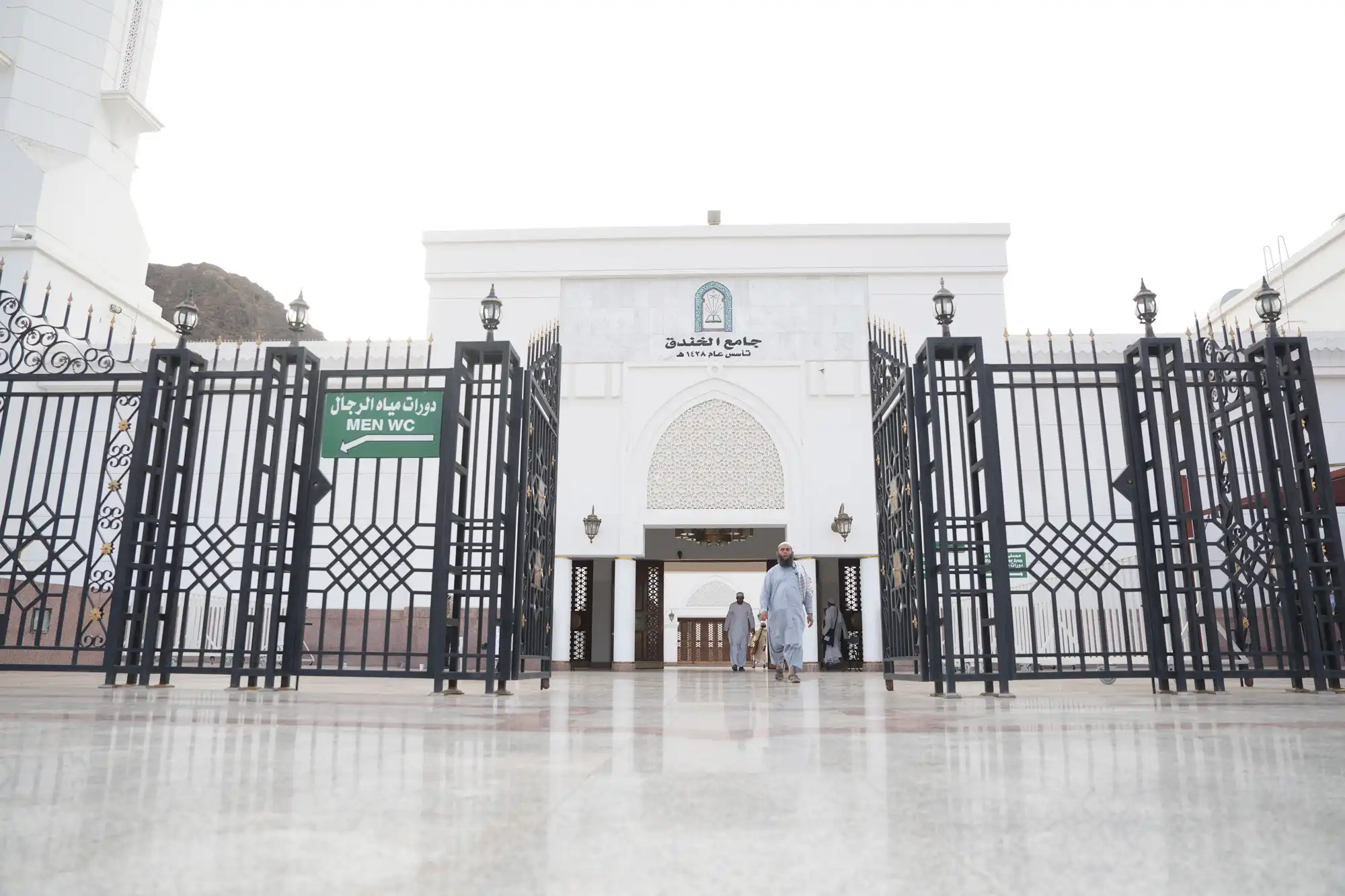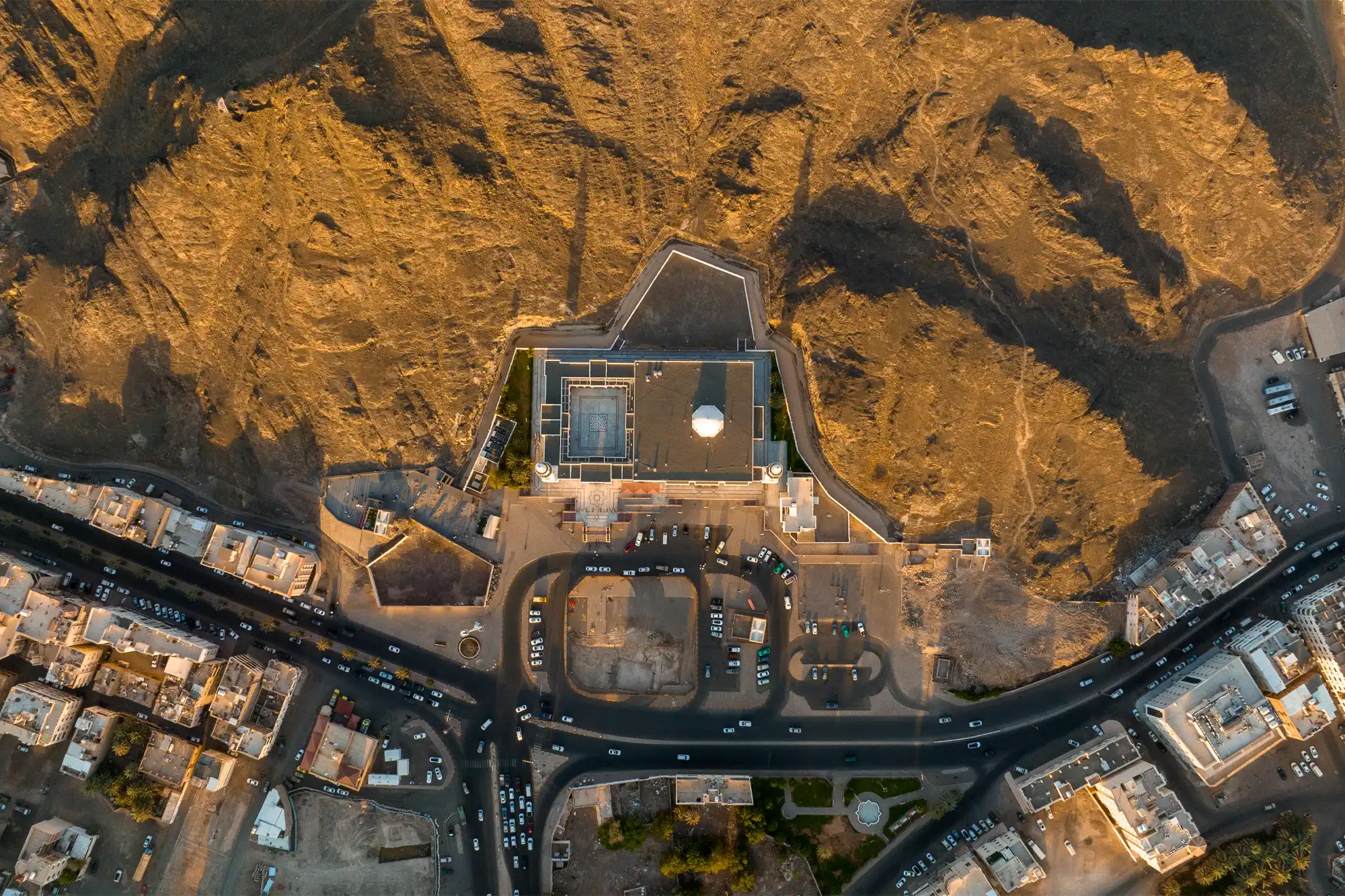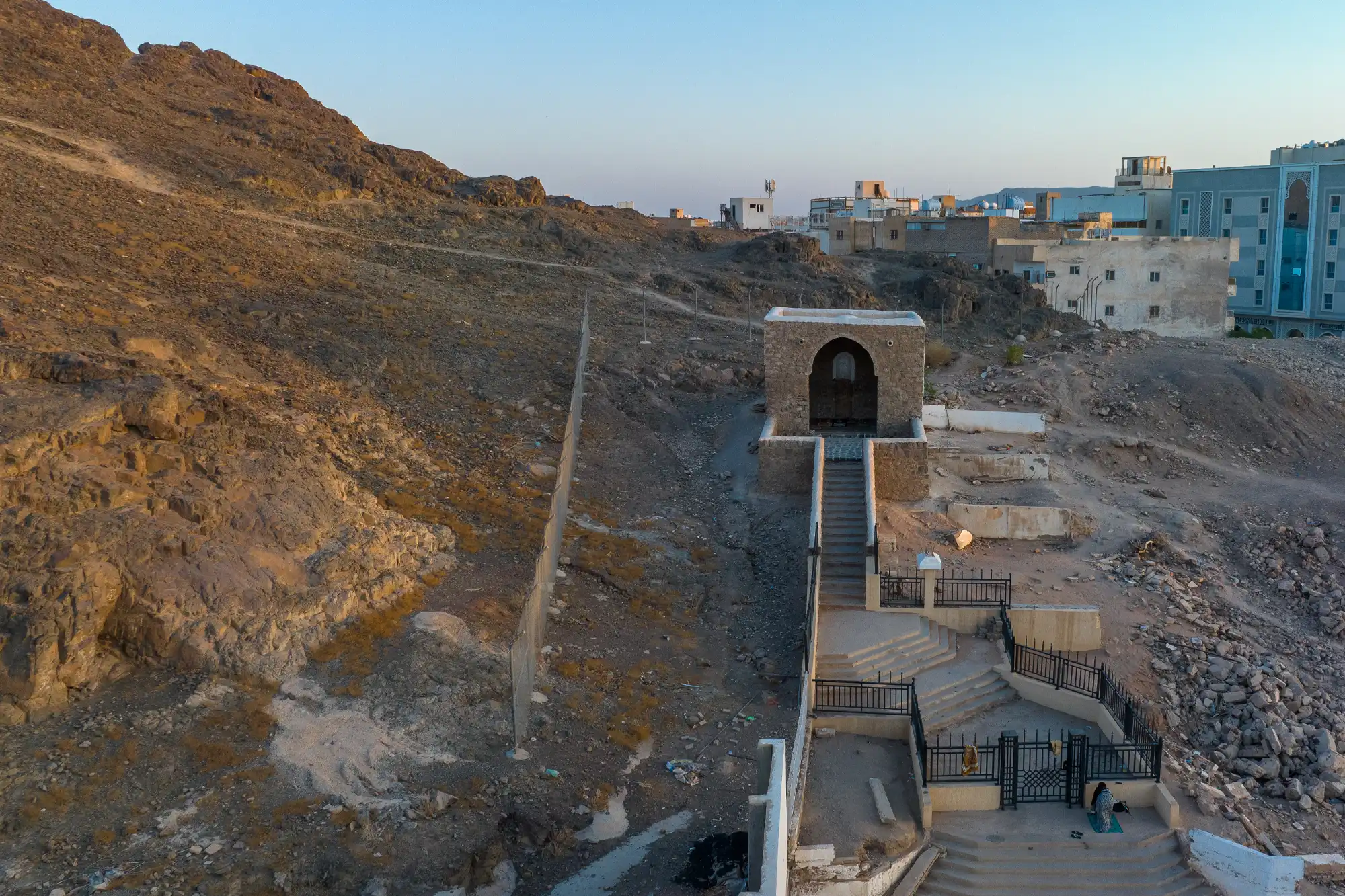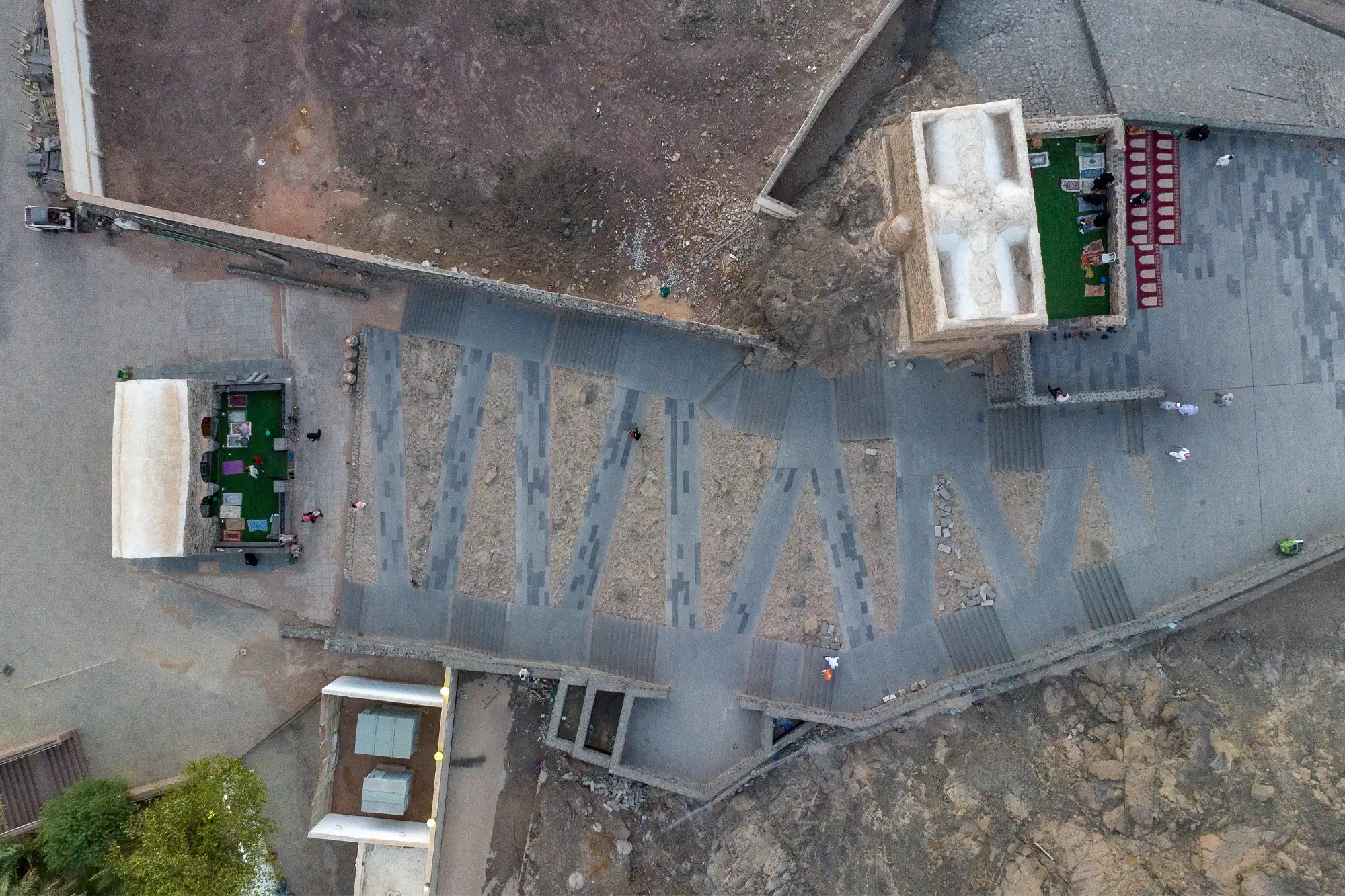General Information:
The Trench is the name of the groove dug by the Messenger of Allah and the Muslims to protect Madinah from Quraysh polytheists and their allied tribes.
The battle that took place on its sides was called the Battle of the Confederates, in which the Qur’an immortalized the details of the morale and reactions of the two armies, as well as the subsequent great victory of the Messenger of Allah, blessings and peace be upon him. It completely changed the balance of power. This drastic change is reflected in the Prophet's saying after the allied forces returned with a bitter disappointment: 'From now onwards, we will attack them. They shall not be able to attack us. We will go to them." This battle took place in 5 AH.
The Trench as a Warfare Tactic:
The enemies of the Messenger of Allah, including the Jews of Khaybar and Banu Nadir and their allies from Ghatafan and Fazara, agreed with the polytheists of Quraysh and its allies from Kinana and the Tihama to eliminate Islam and Muslims. An army of 10,000 fighters gathered, and was later joined by Banu Qurayza after they broke a treaty with the Muslims.
The Prophet, peace be upon him, consulted his companions to devise a plan. Salman Al-Farisi, may Allah be pleased with him, advised the Prophet to order Muslims to dig a trench. It is a tactic employed by the Persians when attacked in their cities, but it was unknown to the then Arabs. So, the Prophet, blessing and peace be upon him, approved of Salman's advice and dug the trench in the northern border of Madinah because it was vulnerable, while from other directions the city was naturally fortified by mountains, rugged lava plains, farms and connected houses.
Trench Location and Dimensions:
The trench is located in the north of Madinah, approximately 2,500 meters from the Prophet's Mosque.
Starting at Al-Sheikhin area, it extends from the eastern lava plain to the western one.
The trench extends north of Al-Raya Mosque in what is now Othman ibn Affan Road, passing along Jabal Sala', where Al-Fath Mosque stands today. The trench extends west to Al-Madhad.
The trench is approximately 5,544 meters long, 4-5 meters wide, and 3 meters deep. It shall be noted that the soil removed from the trench and piled on the Muslim side formed an additional barrier.
The Trench as a Historical Landmark:
The trench has disappeared long ago. Only some traces of monuments that are saturated with meanings and remind us of those immortal stories remained. The most important of these are:
1. The trench track
2. Al-Fath Mosque, aka. Al-Ahzab Mosque and Al-A'la Mosque. Some of the most important events of the Battle of the Trench took place here.
3. The Seven Mosques.
4. The Cave of Bani Haram: it is the cave in which the Messenger, blessings and peace be upon him, slept over a few nights during the Battle of the Trench
5. Al-Raya Mosque and Hill: the mosque was erected on the site where the command tent was erected for the Prophet, blessings and peace be upon him, during the days of digging the trench.
6. Bani Haram Mosque: it is located in Shi'b Bani Haram. Next to the mosque, the miraculous increase of food took place.
7. Al-Khandaq Mosque: it is a congregational mosque built during the reign of King Abdullah.
Trench Visitors Today:
The place is an ideal destination for visitors from around the world. They can see the landmarks of the Prophet's life, inspect the remaining traces around the trench, and visualize the battle in which Muslims were engaged.
